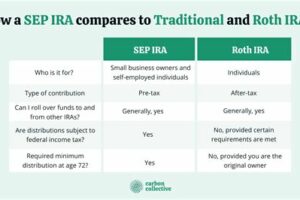Table of Contents
Farm subsidies are payments made by the US government to farmers to help stabilize and support agricultural production.
Have you ever wondered why certain crops in the United States are so cheap? The answer lies in farm subsidies. These are government payments made to farmers and agricultural businesses to help them stay afloat and compete in the global market. But the question remains: are these subsidies fair? Critics argue that they disproportionately benefit large agribusinesses, while others argue that they are necessary to support small family farms. Regardless of your stance, it’s important to understand how farm subsidies work and what impact they have on our economy and food system.
When you think of farms, you may picture rolling green hills, cows grazing in fields, and tractors plowing the land. However, there is a lot more to agriculture than meets the eye. One aspect of farming that many people may not be aware of is farm subsidies. In the United States, these subsidies play a significant role in the agricultural industry.
What are Farm Subsidies?
Farm subsidies are government payments made to farmers and agribusinesses to supplement their income and support their operations. These payments are designed to help farmers stay in business during times of low commodity prices or other economic challenges. The idea is that by providing financial support to farmers, the government can help maintain a stable food supply and support rural communities.
Types of Farm Subsidies
There are several types of farm subsidies available in the United States, each with its own set of rules and regulations. Some of the most common types of subsidies include:
- Direct payments: These are payments made to farmers based on historical crop production. Farmers receive a set amount of money each year, regardless of current market conditions.
- Crop insurance subsidies: These subsidies help farmers purchase crop insurance to protect against losses due to weather, pests, or other factors.
- Price support programs: These programs guarantee a minimum price for certain crops, which helps stabilize prices and prevent market fluctuations.
- Conservation payments: These are payments made to farmers who implement conservation practices to protect soil, water, and wildlife on their land.
Who Receives Farm Subsidies?
Farm subsidies are typically given to farmers who grow crops such as corn, wheat, soybeans, cotton, and rice. However, livestock producers and dairy farmers may also be eligible for subsidies. In general, subsidies are targeted towards larger commercial farms that produce a significant amount of agricultural products.
The Pros and Cons of Farm Subsidies
Like any government program, farm subsidies have both advantages and disadvantages. Some of the pros of farm subsidies include:
- Helping farmers stay in business during tough economic times
- Maintaining a stable food supply for consumers
- Supporting rural communities and economies
However, there are also some cons to farm subsidies. These include:
- Encouraging overproduction of certain crops, which can lead to surpluses and low prices
- Providing an unfair advantage to larger commercial farms that receive the majority of subsidies
- Using taxpayer money to support a specific industry
The Future of Farm Subsidies
The topic of farm subsidies is a contentious one, with opinions varying widely on their effectiveness and necessity. Some argue that subsidies are necessary to support small farmers and maintain a stable food supply, while others believe that they provide an unfair advantage to large agribusinesses and encourage overproduction.
Regardless of your opinion on the matter, it’s clear that farm subsidies will continue to be an important issue in the agricultural industry. As the farming landscape continues to evolve, it will be interesting to see how these subsidies are adapted to meet the changing needs of farmers and consumers alike.
Understanding farm subsidies is crucial to comprehending the support the US government provides to the agricultural industry. As agriculture is the backbone of the United States’ economy, the government offers various types of subsidies to farmers to promote the industry’s growth and stability.
There are several types of farm subsidies in the US, including direct payments, crop insurance, trade aid, and disaster assistance. Each type of subsidy serves a unique purpose and provides farmers with different forms of support. Direct payments are monetary subsidies provided by the government to farmers regardless of the crop yield. This subsidy was introduced to provide stable income support to farmers.
Crop insurance provides farmers with protection against crop damage or yield loss. Farmers can select an insurance coverage level and premium that suits their particular circumstances. Trade aid is extended to farmers who have been hurt by fluctuations in the market due to trade policies. This subsidy exists to compensate for losses incurred by farmers due to the decline in commodity prices because of trade restrictions. Disaster assistance is a type of subsidy that provides relief to farmers who have been affected by natural calamities like floods, drought, and hurricanes. The government provides low-interest loans to help these farmers get back on their feet.
Farm subsidies gained popularity in the 1930s when the US government launched a series of agricultural programs to support rural communities during the Great Depression. The government continued to increase support for agriculture during World War II. Despite this, farm subsidies have been a subject of controversy for several years, with some critics questioning their effectiveness and impact on the industry. Some argue that subsidies have contributed to the overproduction of certain crops, leading to environmental damage and unfair competition.
There are ongoing debates about the future of farm subsidies in the US. Some argue that subsidies should be eliminated, while others believe that they should be reformed. The government has taken several steps to reduce subsidies, but it continues to support farmers through different forms of financial aid.
Although farm subsidies have their fair share of criticisms, they play a vital role in supporting the US agricultural industry. Society needs to strike a balance between providing support to farmers and promoting sustainable practices to ensure the industry’s long-term growth. As such, the government must continue to evaluate and adjust farm subsidy programs to benefit both farmers and the environment.
Once upon a time, in the United States of America, there was a system known as Farm Subsidies. For those who are unfamiliar, Farm Subsidies are government payments to farmers and landowners to help supplement their income and ensure that they continue to produce crops and livestock.
From one perspective, Farm Subsidies can be seen as a necessary evil. Farmers work long hours in often unpredictable environments, and the agricultural industry is subject to many outside factors that can make or break a season’s profits. Subsidies provide a safety net for farmers, ensuring that they can continue to produce food for the nation even in the face of adversity.
On the other hand, some argue that Farm Subsidies are unfair and ultimately hurt small farmers and low-income families. The subsidies tend to favor large, corporate farms that produce crops like corn and soybeans, which are used to make processed foods. These crops receive the bulk of government funding, while smaller farms that produce fresh fruits and vegetables receive little to no support.
Despite the controversy surrounding them, Farm Subsidies remain an integral part of the American agricultural landscape. They help to keep the nation fed and ensure that farmers can continue to make a living despite the many challenges they face. Whether you see them as a necessary evil or an unfair system, the fact remains that Farm Subsidies are here to stay.
So, the next time you sit down to enjoy a meal, take a moment to think about where your food came from and the hard work and dedication that went into producing it. And remember that behind every bite there is a farmer who may have relied on Farm Subsidies to make it possible.
- Farm Subsidies are government payments to farmers and landowners to help supplement their income and ensure that they continue to produce crops and livestock.
- Subsidies provide a safety net for farmers, ensuring that they can continue to produce food for the nation even in the face of adversity.
- Some argue that Farm Subsidies are unfair and ultimately hurt small farmers and low-income families.
- Farm Subsidies tend to favor large, corporate farms that produce crops like corn and soybeans, which are used to make processed foods.
- Smaller farms that produce fresh fruits and vegetables receive little to no support.
- Farm Subsidies remain an integral part of the American agricultural landscape.
Thank you for taking the time to read about farm subsidies in the United States. It is important to understand the history and purpose of these subsidies, as they have a significant impact on our agricultural industry and economy as a whole.As we have discussed, farm subsidies were originally implemented to support struggling farmers during times of economic hardship. However, over time the subsidies have evolved into a complex system that primarily benefits large agribusinesses rather than small family farms. This has resulted in a number of negative consequences, including environmental degradation, increased dependence on government assistance, and a lack of diversity in the types of crops grown.Moving forward, it is important for policymakers to consider alternatives to the current system of farm subsidies. This could include implementing programs that support sustainable and regenerative farming practices, promoting local food systems, and investing in research and development for new agricultural technologies.Ultimately, the future of our agricultural industry depends on finding solutions that support both farmers and the environment. By working together and advocating for change, we can create a more equitable and sustainable food system for generations to come. Thank you again for your interest in this important issue..
What are farm subsidies in the United States?
When people talk about farm subsidies in the United States, they are referring to financial assistance provided by the government to farmers and agricultural businesses. These subsidies are intended to support farmers and help stabilize the agricultural industry.
Here are some common questions people ask about farm subsidies in the United States:
1. Who receives farm subsidies?
Farm subsidies are typically given to farmers and agricultural businesses that produce crops and livestock. However, the specific requirements for receiving subsidies can vary depending on the program. Some subsidies are targeted towards small farmers, while others may be limited to certain types of crops or regions of the country.
2. How much money is spent on farm subsidies?
The amount of money spent on farm subsidies can vary from year to year, but it is typically in the billions of dollars. In 2019, the federal government spent approximately $22.4 billion on farm subsidies.
3. Why does the government provide farm subsidies?
The government provides farm subsidies for a variety of reasons. One of the main goals is to support farmers and help ensure a stable food supply for the country. Subsidies can also be used to promote certain types of agriculture, such as organic farming or sustainable practices.
4. Are there any criticisms of farm subsidies?
Yes, there are many criticisms of farm subsidies. Some people argue that subsidies create an unfair advantage for large agribusinesses, while others say that they encourage overproduction and can harm the environment. There are also concerns about the cost of subsidies and whether they are an effective way to support farmers.
5. Are there any alternatives to farm subsidies?
There are several alternatives to traditional farm subsidies, such as crop insurance programs, conservation programs, and research and development grants. These programs can provide support to farmers without the same level of direct financial assistance as traditional subsidies.
In conclusion, farm subsidies are a complex issue with many different opinions and perspectives. While they can provide important support for farmers and the agricultural industry, they also have their drawbacks and limitations. As the debate over farm subsidies continues, it will be important to consider all of the factors involved and explore alternative approaches that can help support sustainable agriculture in the United States.






